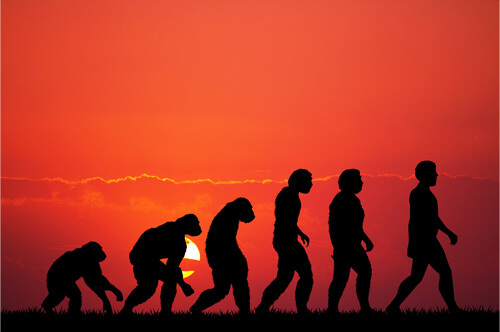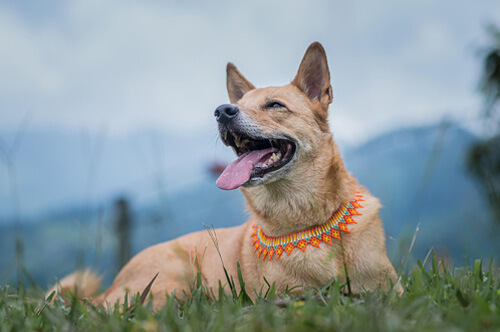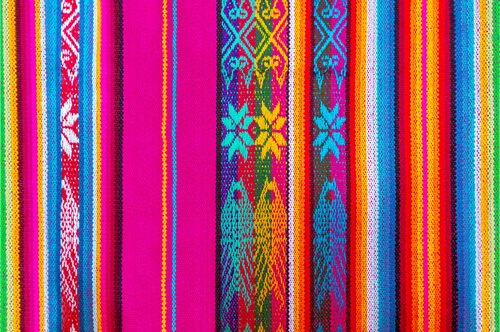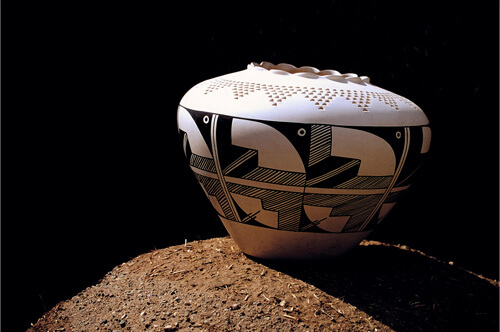The collections of the Matson Museum comprise osteological specimens and casts, archaeological artifacts, and contemporary ethnographic works across media from all around the world. Major themes represented in the collections include the evolution of the human species, the material culture of ancient complex societies, and the creative expression of identity by modern peoples. By learning about our origins and differences, visitors ultimately learn more about today’s complex world, asking ourselves the question WHO ARE WE?
The Matson Museum is actively reviewing its collection with respect to provenance of individual donations to have a better understanding of the values and ethical concerns of the many different communities we serve, reflected in our updated exhibits and displays. The Museum works with Native American Tribes and Nations as well as other Indigenous groups to document and repatriate cultural items covered by NAGPRA, including human remains, associated funerary objects, sacred objects, and objects of cultural patrimony. For example, what happened to the “shrunken heads”?
Current and Past Exhibits
Below are descriptions of a few of the Matson’s most popular exhibits.

Walking With Our Ancestors
One of the most significant traits that distinguish humans from other primates is bipedalism, or two-legged walking. When did bipedalism evolve, and under what conditions did bipedalism arise in the hominin lineage?
Learn More about the "Walking With Our Ancestors" Exhibit

Dog Tales
Scientists believe that people transformed wolves into dogs unintentionally; continuous contact between wolves and human populations led to their domestication. How long did it take to domesticate wolves?
Learn More about the "Dog Tales" Exhibit

Recording Quechua Worldview in Textiles
Although the peoples of the highland Andes had no written language before European colonization, they recorded information through geometric designs woven into textiles. How were textiles valued, and how did they sustain indigenous identity and believes in the face of colonialism?
Learn More about the "Recording Quechua Worldview in Textiles" Exhibit

All About Animals
The earliest known art – dating to at least 40,000 years ago – consisted of animals painted on cave walls and zoomorphic sculptures. Fashioning animals out of stone, clay, metal, or wood is widespread among human cultures, past and present. How do animals impact human lives, and how are these relationships reflected in animal images?
Learn More about the "All About Animals" Exhibit

Uncorking the Cultural History of Alcohol
Cultures ranging from ancient China and Egypt to 19th-century Europe and highland Peru have attributed religious, political, and social meanings to alcohol. How is the importance of alcohol reflected around the world through vessels used to store and consume beverages?
Learn More about the "Uncorking the Cultural History of Alcohol" Exhibit

Puebloan Innovators
Artisans of the Pueblo Tribes have created a distinct aesthetic for pottery over the past several centuries. What inspired Pueblo potters to explore new artistic directions and revitalize ancient motifs in contemporary ceramic traditions?
Learn More about the "Puebloan Innovators" Exhibit
Walking with Our Ancestors
One of the most significant traits that distinguish humans from other primates is bipedalism, or two-legged walking. When did bipedalism evolve, and under what conditions did bipedalism arise in the hominin lineage?
Dog Tales
Scientists believe that people transformed wolves into dogs unintentionally; continuous contact between wolves and human populations led to their domestication. How long did it take to domesticate wolves?
Recording Quechua Worldview in Textiles
Although the peoples of the highland Andes had no written language before European colonization, they recorded information through geometric designs woven into textiles. How were textiles valued, and how did they sustain indigenous identity and believes in the face of colonialism?
All About Animals
The earliest known art – dating to at least 40,000 years ago – consisted of animals painted on cave walls and zoomorphic sculptures. Fashioning animals out of stone, clay, metal, or wood is widespread among human cultures, past and present. How do animals impact human lives, and how are these relationships reflected in animal images?
Uncorking the Cultural History of Alcohol
Cultures ranging from ancient China and Egypt to 19th-century Europe and highland Peru have attributed religious, political, and social meanings to alcohol. How is the importance of alcohol reflected around the world through vessels used to store and consume beverages?
Puebloan Innovators
Artisans of the Pueblo Tribes have created a distinct aesthetic for pottery over the past several centuries. What inspired Pueblo potters to explore new artistic directions and revitalize ancient motifs in contemporary ceramic traditions?